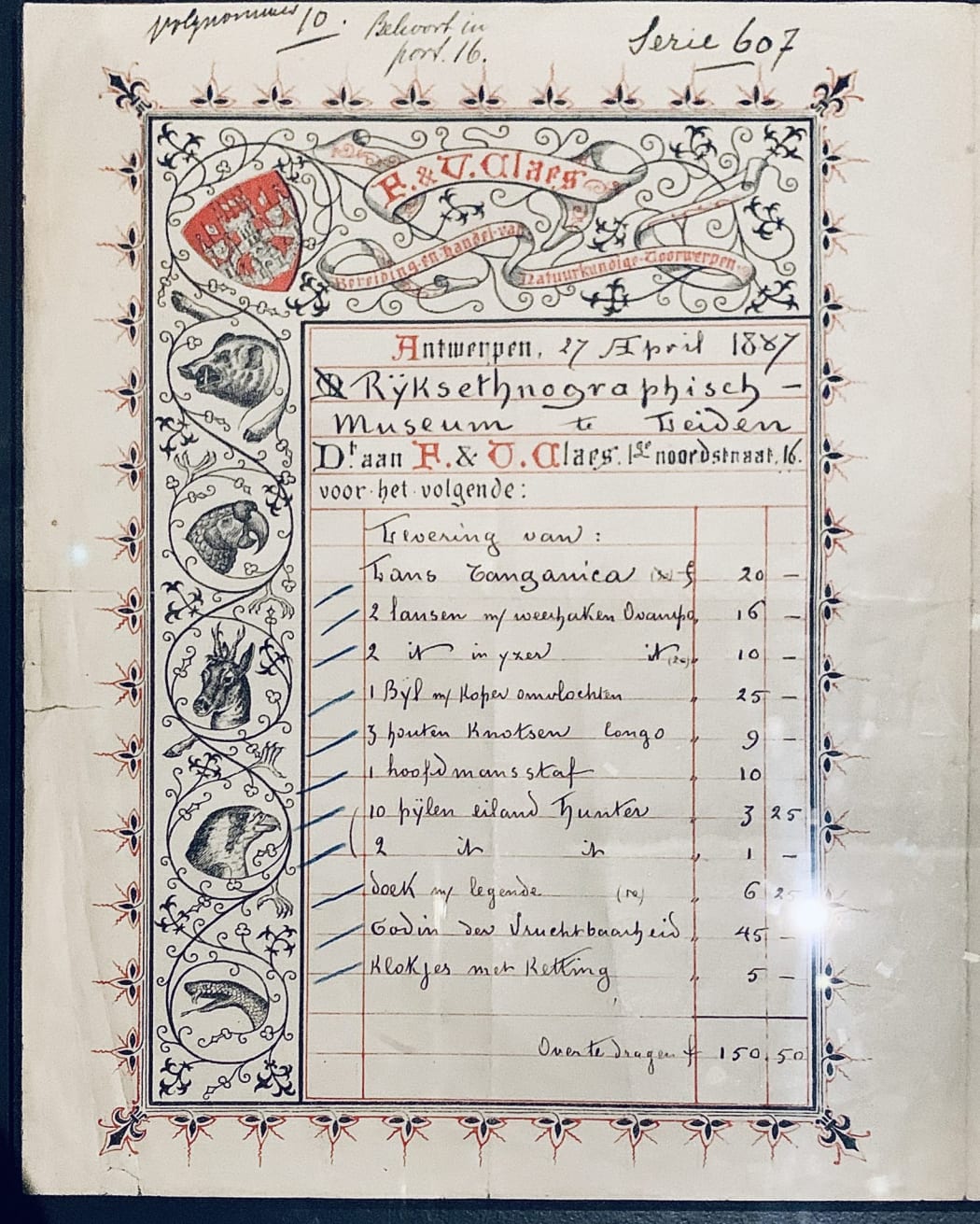
One of the many fascinating stories highlighted in the new exhibition 100xCongo (curated by Els De Palmenaer, Keeper of the Africa collection MAS, in collaboration with Nadia Nsayi, co-curator representation) at the Antwerp MAS Museum is the first World Art Fair held in Antwerp in 1885. This fair presented the ideal occasion for Leopold II to promote his colonial projects in Congo. As with all World Fairs, industry and trade were the principal attractions, and the exhibition breathed the optimism of progress. All participating countries advertised their colonies; the Belgian pavilion displaying Congolese mineral resources, as well as art objects without much attention to their makers or function. To highlight the ‘work of civilisation’, a ‘human zoo’ was erected where 12 Congolese had to reenact daily life in a fictitious village – a forgotten shameful history the exhibition rightfully puts in the picture.

After the world fair, king Leopold II donated most of the art objects to the Leiden Ethnographic Museum in the Netherlands – as the Royal Museum for Central Africa did not exist yet! Another group of objects would be sold by the Antwerp firm F. & V. Claes in 1887. The exhibition shows an invoice from that year where the firm (not a true gallery in the current sense of the word) sells a group of objects to the Ethnographic Museum in Leiden. On the invoice we see they were specialised in the ‘Preparation and trade in natural specimens’ (‘Bereiding en handel van natuurkundige voorwerpen’). A bit similar to the Umlauff firm in Hamburg, one of their specialties indeed were stuffed animals. They also sold objects exhibited at the 1885 World Fair to the Berlin Museum, and would play an important role in the trade in African art up until the start of the 20th century. Frans Claes (1860-1933) would later become the curator of the Antwerp Vleeshuis Museum, and his private collection would be sold at auction after his death in 1933. I patiently await until a researcher explores the history of this pioneer dealers.
It is a fun coincidence that a century later, the brothers Didier and Alexandre Claes, while unrelated to Frans & Vincent, continue the tradition of their namesakes! And, if you were wondering, my name, Claessens, is just plural for Claes :)